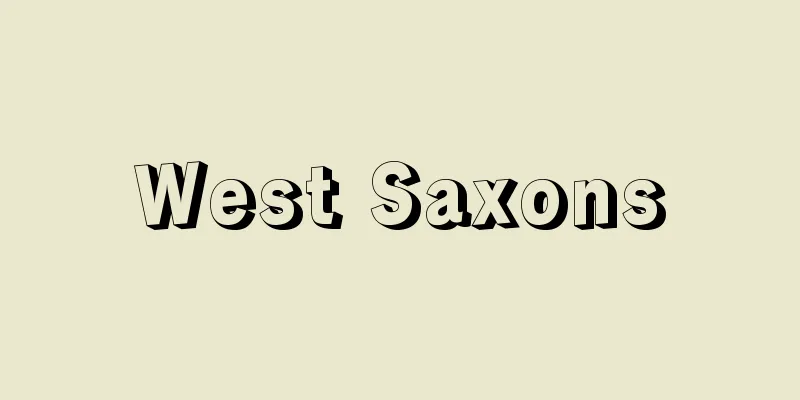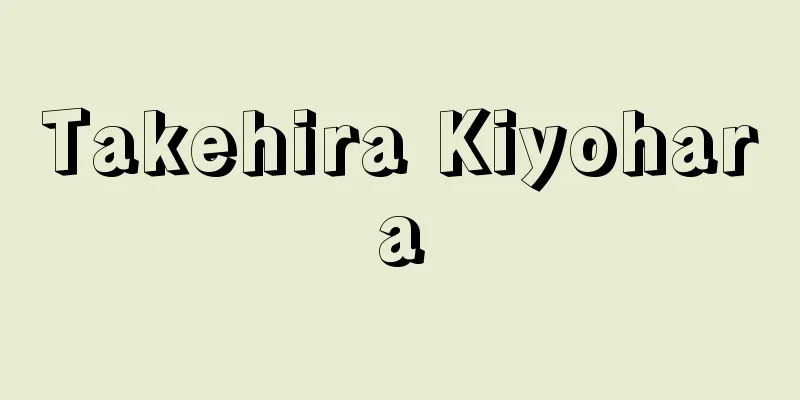Copper alloy

|
An alloy mainly made of copper. It is made by adding one or more other metals or nonmetallic elements to copper in order to improve the excellent properties of copper. The copper alloy that has been used since ancient times is bronze, an alloy of copper and tin. It is thought that humans obtained an alloy that was formed when copper and tin ores were reduced and melted naturally in an ancient forest fire, and after learning the composition of the alloy, artificially mixed copper and tin to create it. Thus, in the Zhou dynasty in the East, bronze was divided into six types according to the tin content, and the "Liuqi" was created. The second copper alloy, brass (copper-zinc system), is said to have appeared in the Roman era, and for a long time, the era of bronze alone continued. For this reason, the custom of calling copper alloys bronze came about, and the term bronze (bronze) was widely used both in Japan and abroad to mean copper alloys. This is why alloys that do not contain any tin are called aluminum bronze, nickel bronze, etc. Bronze undergoes eutectoid transformation, and like steel, can be subjected to the effects of heat treatment such as quenching and tempering, so some bronze is further improved by adding elements other than tin, such as phosphor bronze. Zinc and lead are added for casting. Brass can dissolve up to 38% zinc, but it does not undergo eutectoid transformation, so it is strengthened by this wide range of solid solutions, work hardening, and low-temperature annealing hardening. There are also special brasses that contain one or more elements in addition to zinc, such as iron, lead, tin, nickel, manganese, and silicon. In addition to these two types, other commonly used alloys include the aluminum bronze (copper-aluminum), nickel silver (copper-nickel-zinc), manganese copper (copper-manganese), beryllium copper (copper-beryllium), titanium copper (copper-titanium), Cawson alloy (copper-nickel-silicon), high-strength, high-conductivity alloys such as chromium copper, zirconium copper, and low-beryllium copper, manganin for instrument wire, Kelmet (copper-lead) for bearings, and copper-nickel-manganese alloy for springs. In addition, there is the cupronickel (copper-nickel) used in 50-yen and 100-yen coins. [Ryōtsugu Mishima] "Fundamentals and Industrial Technology of Copper and Copper Alloys" (1988, Japan Copper and Brass Association) "JIS Handbook 41 Metal Analysis Non-Ferrous Edition" (1996, Japan Standards Association) [Reference items] | | | - | |Source: Shogakukan Encyclopedia Nipponica About Encyclopedia Nipponica Information | Legend |
|
銅を主体とする合金。銅に別の金属または非金属元素の1種または2種以上を加え、銅の優れた特性を生かしつつ改良する目的でつくられる。古くから用いられていた銅合金は銅とスズの合金の青銅で、これは古代の山火事で銅とスズの鉱石が還元されて自然に溶け合ってできた合金を人類が入手し、その内訳を知ったのちは人為的に銅とスズとを配合してつくりだしたものと考えられる。こうして東洋では周代にスズの含有量により青銅を6種に用途分けした金の「六斉」がつくられた。第二の銅合金である黄銅(銅‐亜鉛系)の現れたのはローマ時代といわれ、長く青銅のみの時代が続いた。このため銅合金を青銅という習慣ができ、内外ともに広く銅合金という意味で青銅(ブロンズ)という。スズがまったく入っていない合金にアルミニウム青銅、ニッケル青銅などの名があるのはこのためである。青銅は共析変化があり、鋼と同じように焼入れ、焼戻しの熱処理効果が利用できるので、スズ以外の元素を追加してさらに改良を図っているものがあり、リン青銅はその例である。鋳物用には亜鉛や鉛を加える。 黄銅は亜鉛が38%まで固溶するが、共析変化はないので、この広い固溶による強化に加工硬化を加え、さらに低温焼きなまし硬化という現象を利用して強さを得ている。亜鉛のほかに一つまたはそれ以上の元素を加えた特殊黄銅もあり、鉄、鉛、スズ、ニッケル、マンガン、ケイ素がその例である。この2系統以外でよく使われるものは、前記のアルミニウム青銅(銅‐アルミニウム)、洋白(銅‐ニッケル‐亜鉛)、マンガン銅(銅‐マンガン)、ベリリウム銅(銅‐ベリリウム)、チタン銅(銅‐チタン)、コーソン合金(銅‐ニッケル‐ケイ素)、クロム銅、ジルコニウム銅、低ベリリウム銅などの高力高電導合金、計器用線材のマンガニン、軸受用のケルメット(銅‐鉛)、ばね用の銅‐ニッケル‐マンガン合金などがある。そのほか、50円、100円硬貨の白銅(銅‐ニッケル)がある。 [三島良續] 『『銅および銅合金の基礎と工業技術』(1988・日本伸銅協会)』▽『『JISハンドブック41 金属分析 非鉄編』(1996・日本規格協会)』 [参照項目] | | | | | | |出典 小学館 日本大百科全書(ニッポニカ)日本大百科全書(ニッポニカ)について 情報 | 凡例 |
>>: School refusal - toukoukyouhi
Recommend
Apothecary
... In Japan, where the separation of medical and...
Division
...In 1911, six of D'Annunzio's works wer...
Warm ischemia time
...Apart from kidneys, which have two organs, org...
Bon's Hollow
A shallow depression in the center of the back of ...
Miquelon (English spelling)
A French island off the south coast of Newfoundlan...
Cyclothem
…Sand and clay, or silt and clay, often form inte...
Grass spider - Grass spider (English spelling)
A spider of the family Polytminae. It spins a shel...
Environmental hormones
Chemical substances contained in many industrial p...
Rumaila Oil Field
An oil field in Iraq, located in the south of the ...
Ruhrkohle AG
A major German coal company based in the Ruhr coal...
Shizue Akizuki
…At the time of its founding, the group had 42 me...
General Motors Corp.
The world's largest American automobile compan...
Moebi (shrimp) - Metapenaeus moyebi
A decapod crustacean of the family Penaeidae (illu...
Hachiro Kanno
He was seen as a leader of the social reform move...
The Flowers of Evil (English: Les Fleurs du Mal)
A collection of poems by French poet Baudelaire. ...









